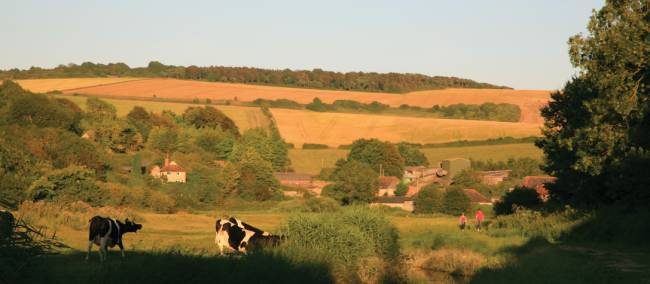
All about the benefits of hiking gaiters
Blog home / Gear Matters: Hiking Gaiters & Cycling Overshoes
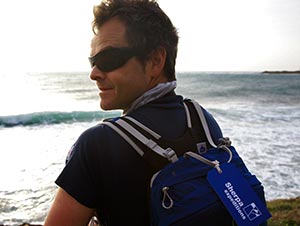
Our resident guide, John Millen, brings you an anecdote, update, or tip on the gear you are likely to use on a walking or cycling holiday. Always from his personal point of view. This month he looks at hiking gaiters and cycling overshoes to keep your feet dry and warm when on your trip.
One particularly wet day crossing the Pennines on the Coast to Coast with Walkers' Britain (then Sherpa Expeditions) a few years ago was an extreme case in the realisation of how important gaiters can be. There is a section called White Mossy Moor, which, in normal conditions, is a saturated peaty morass. I was wearing Scarpa Yeti gaiters which came up to the knee and had a rubber rand which sealed over the boot. I didn’t get wet feet at all and they were perfect for this walk. This contrasted with the fortunes of a lady in the group who insisted on wearing low cut boots for the wetter sections; they got sucked off by the mud and she was left hopping around in her socks! We had to dig a trench around the boot to liberate it from the bog.
Hiking Gaiters
Hiking gaiters have come and gone in different styles and fashions over the years. They originated from the military Puttees, which were woollen or proofed canvas bands wrapped around the top of boot and leg in spirals to stop water, dust and stones entering the boot.
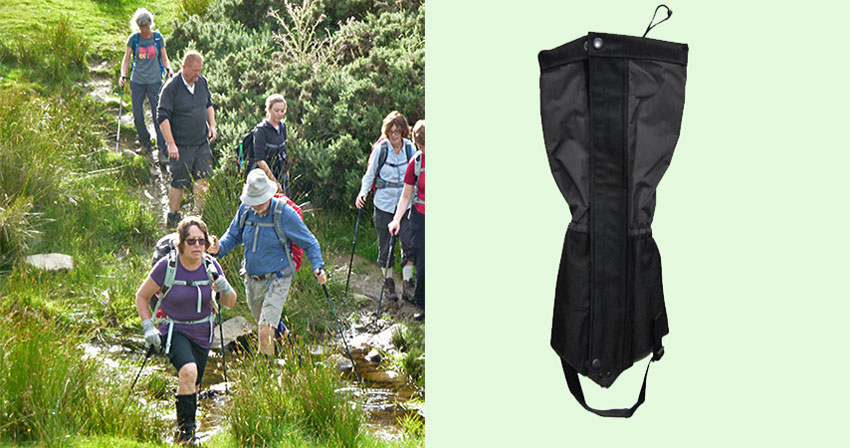
Today, the simplest and cheapest gaiters (such as the Regatta Caymen pictured above) are a tube of canvas or nylon that folds around the top of the boot and either up to the knee, to the mid-calf or just to the top of the ankle (in the case of the ankle gaiters). The two edges of the fabric are usually connected via a zip or Velcro, and there is normally a tie at the top to prevent the gaiter sinking down the leg and sagging around the ankle. Hiking gaiters usually have a hook which you pull to extend the (elasticated) bottom tongue of fabric over the top of the boot which connects to the boot lacing. There is normally also a strap which goes under the sole to help prevent the gaiter riding upwards.
More expensive gaiters such as the Berghaus Yeti (pictured below) have become elaborated with for example Goretex type fabrics to make them more comfortable or rubber rands, for a better waterproof seal and with insulation for high altitude walking.
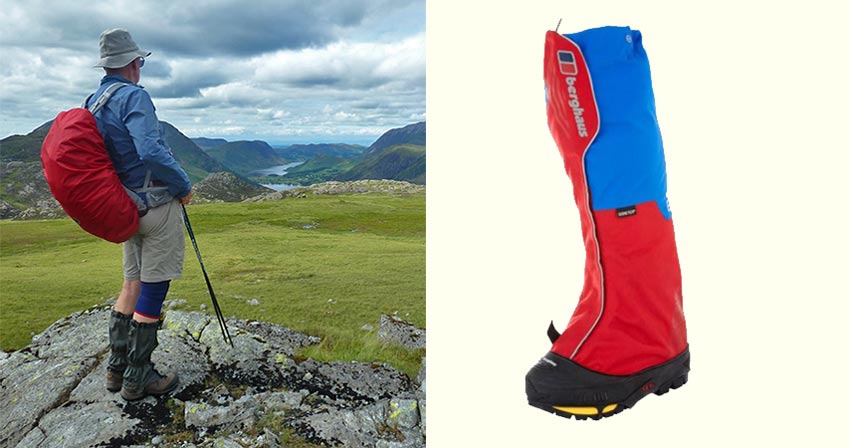
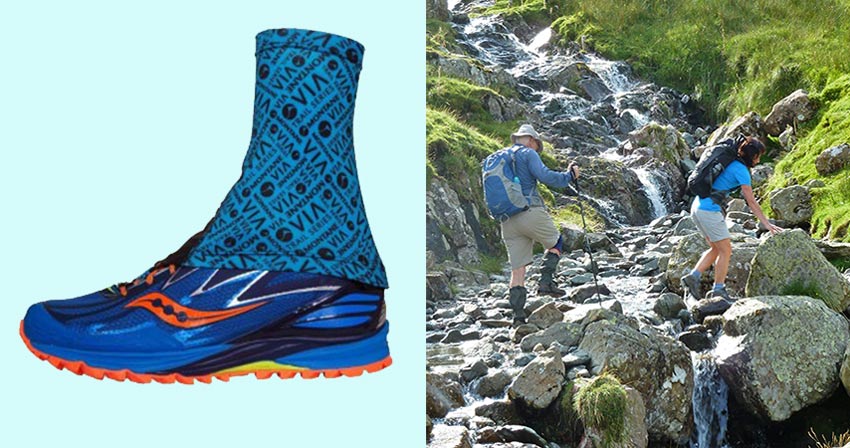
Some trail runners now use light ankle gaiters to stop stones jump up your ankles such as the Montane Via-Sock It (pictured above).
If anything apart from for high altitude mountaineering, gaiters have gone slightly out of fashion with the range of more lightweight, sporty footwear most people are walking in these days. These are quick to take off and empty out, are freely draining, or have breathable fabrics.
Waterproof trousers have also got better so in the rain, people instead just wear these over the boot. Hiking gaiters can be a bother to put on and zips and Velcros don’t work too well when they are soiled. Besides, under-straps and rands wear out fairly quickly and gaiters are easily snagged by crampon points. However, they will help save you from frost bite in snowy conditions.
Cycling Overshoes
For cyclists, the equivalent to a hiking gaiter is an overshoe and these really do aid comfort by reducing the incidence of wet and cold numb feet. They are recommended for touring cyclists as much as for sporting riders as a great aid to all-day comfort in poor weather. Overshoes can vary in price depending on the materials used: the cheapest tend to be neoprene and the more expensive elasticated Goretex-type fabrics.
Neoprene overshoes, such as the Seal Skinz (pictured below) are fine but can result in warm sweaty feet in some conditions. This however is better than cold frozen ones.
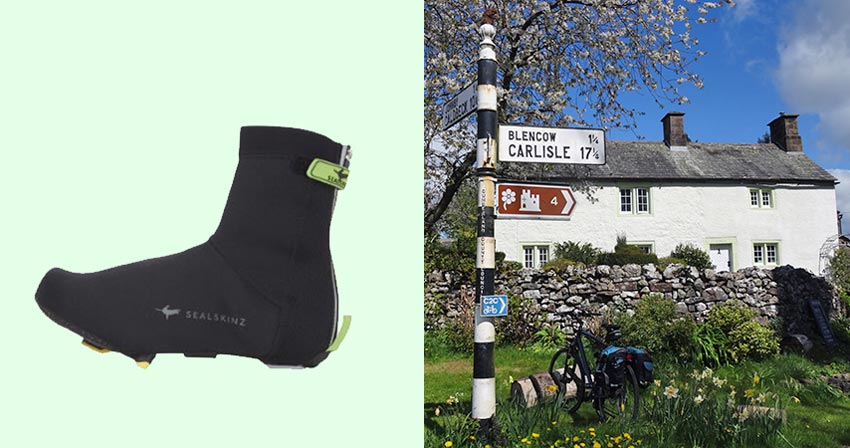
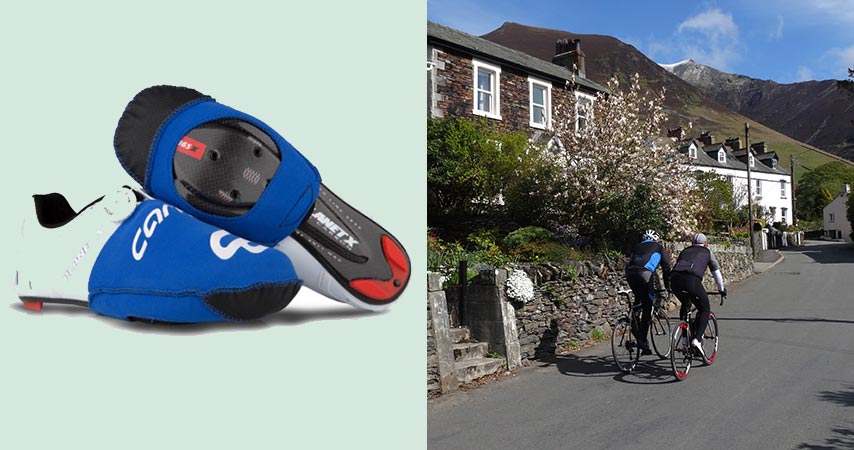
If you want a minimalist approach to keep your toes warm, there are toe covers to wear over your shoes. These can easily be stowed in your cycling jersey pocket and can be put on quickly when you’re in need to keep toes toasty. An example for this can be the Carnac Toe Cover (pictured above).
It is important to have a good fit for your overshoe. If they are too tight, they are too hard to get on. If they are too loose, the wind can conspire to pull them off or they start to rub annoyingly against cranks or even get snagged in your bike chain.
Overshoes can never be completely watertight as rain or splash water would potentially run down the cyclist’s leg. Also, the overshoe leaves exposed the underside of the cycle shoe so that cleats can be used in the normal way.